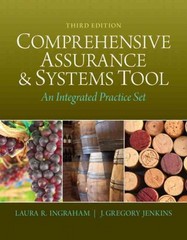Question
Calculate the after-tax cash flows during the life of each the projects. Be sure to identify the total costs of ownership and deduct those costs
Calculate the after-tax cash flows during the life of each the projects. Be sure to identify the total costs of ownership and deduct those costs from the benefits to arrive at the net cash inflow per year. CEO of ACH, wants you to evaluate two investment proposals that the company is considering:
investment 1. The purchase of a coffee roaster plant in Puerto Rico;
Investment 1 in Roasted Coffee Plant Ms. Matthews is considering purchasing a coffee plant in Puerto Rico, where labour is cheap, and there are proximal coffee farms to help lower transportation costs. The acquisition price of the plant is $6M, which includes roasting equipment that originally cost $14M when it was purchased eight years ago. Some of the equipment is on its last legs, so an additional $2M of equipment has to be purchased. The roaster plant currently has $2M of available tax shield left, excluding any tax shield related to the equipment to be purchased. The direct materials and direct labour used to manufacture these products are 8% and 7% of sales, respectively. The actual roasting processing costs are approximately 17% of sales. These costs, as a percentage of sales, are expected to remain consistent over the time horizon. The plant also requires two managers with fixed salaries of $50,000 each per year. Insurance for the plant and equipment is $40,000 per year. Other incremental manufacturing overhead costs (property taxes, maintenance, security, etc.), excluding depreciation, are estimated to be $75,000 annually. Wages are expected to increase with inflation (estimated to be 2%) over the time period, while other fixed costs are expected to remain steady. Variable transportation costs (gas, truck driver salaries, etc.) are estimated to be 12% of incremental revenue and include transportation of raw materials to the roaster and finished products to the port for delivery to ACH coffeehouses. The roasted coffee plant is expected to produce 1.1M pounds of coffee for the first two years, with production dipping by 100,000 pounds per year after this, due to lower productivity from the deteriorating equipment. Each pound of roasted coffee can be sold at $3.25 per pound (either to ACH retail cafes, franchise cafes, or to wholesale partners), with the price expected to rise with inflation over time. Each pound of coffee can make 30 cups of coffee that can sell at an average retail price of $4.00 per cup. Ms. Matthews has stressed that the profitability of the plant base has to be looked at on a stand-alone basis (i.e., from the sales from the plant to buyers), not from retail cafs to customers. Ms. Matthews wants to see if the project will reach profitability after 5 years, as significant reinvestment will be needed after five years to keep the plant operational. She wants you to evaluate the return on investment in that period using the investment criteria of payback period, discounted payback period, NPV, IRR, and profitability index.
Step by Step Solution
There are 3 Steps involved in it
Step: 1

Get Instant Access to Expert-Tailored Solutions
See step-by-step solutions with expert insights and AI powered tools for academic success
Step: 2

Step: 3

Ace Your Homework with AI
Get the answers you need in no time with our AI-driven, step-by-step assistance
Get Started


